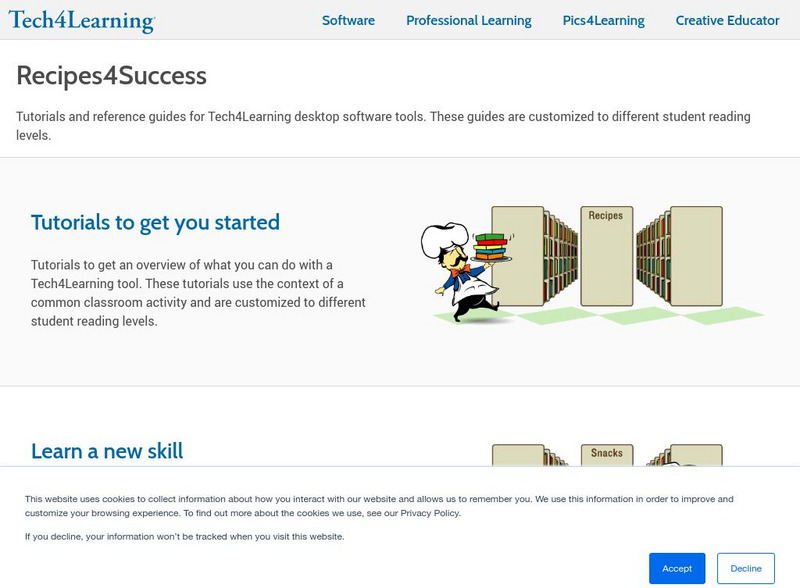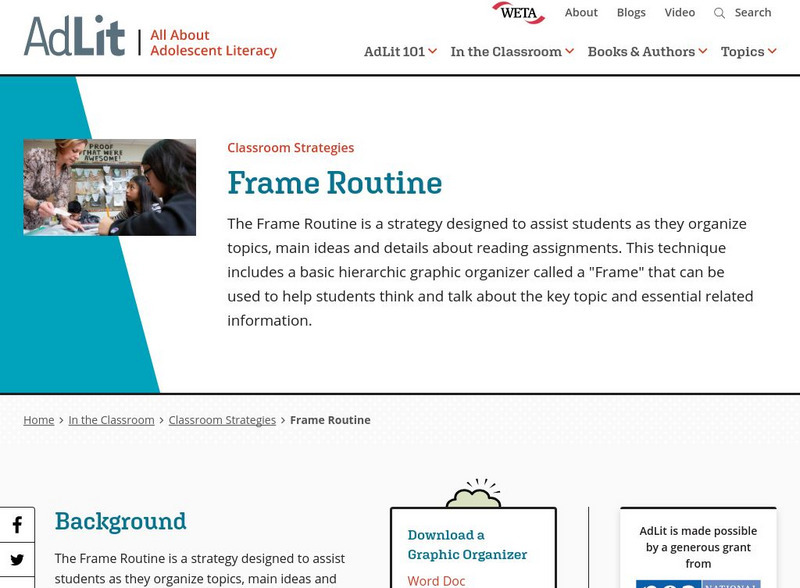All Things PLC
A Balanced and Coherent System of Assessment
Assessment is key in any professional learning community (PLC). Check out this graphic that details the types of, frequency of, and purpose of various types of assessments used by PLC teams.
Curated OER
Using Google Docs
This is a fantastic resource for teachers to have in their tool belts upon entering into the world of using Google Docs in the classroom! It is a reference sheet with step-by-step instructions and graphics for everything from basic...
EngageNY
TASC Transition Curriculum: Workshop 12
How can opinions slant facts? Workshop participants learn how to examine primary and secondary sources and identify the author's point of view. They also examine how visual art impacts the meaning and rhetoric of sources. Full of...
William & Mary
Inferential Reading Comprehension Considerations Packet
Don't forget to read between the lines! Educators learn tips and activities to help scholars learn to infer to increase reading comprehension. Activities suggested include think alouds, backwards words, and who's who. the packet includes...
Curated OER
Visual Literacy: Using Images to Increase Comprehension
A colorful PowerPoint is a great way to introduce the topic of visual literacy. The eye-catching presentation begins with an overview of visual literacy and then provides some specific strategies to help enhance reading comprehension. As...
Oregon Education Professional Development Commission
The First Days
Designed for first-year teachers, this 116-page packet has it all. Questions you should ask administrators and fellow teachers, a checklist of things to do before school starts, a school-year calendar to record special school events and...
Washburn University
Writing That Works
Looking for guides to help make teaching writing easier? Then this book is worth reading! Writing That Works is a complete guide for teaching technical writing. The guide begins with the what and why of technical writing and ends...
College Board
Random Variables vs. Algebraic Variables
Variables can vary in meaning. A reference material for AP® Statistics explains the difference between random and algebraic variables. It provides a hypothetical situation involving dice—great for use in a classroom situation.
National Science Teachers Association
Using Concept Maps in the Science Classroom
A good concept map requires high thought processes. This makes it a great tool for teaching and evaluating your pupils. A helpful article describes a great approach for teaching young scholars the art of concept map building and how best...
College Board
AP Calculus: Slope Fields
Ready to field questions about slope fields? An article on AP® Calculus teaching methods describes how to teach about slope fields to solve differential equations. It gives some sample problems to consider with the class and how to...
College Board
Using the Java Collections Hierarchy
Collect a set of collections. Professional development material provides teachers with information about collections that are in AP Computer Science. Materials include teaching strategies, sample labs, and worksheets. Educators use the...
College Board
Is That an Assumption or a Condition?
Don't assume your pupils understand assumptions. A teacher resource provides valuable information on inferences, assumptions, and conditions, and how scholars tend to overlook these aspects. It focuses on regression analysis, statistical...
College Board
Coke® Versus Pepsi®: An Introductory Activity for Test of Significance
Most people claim they can tell the difference between Coke and Pepsi. Scholars conduct a fun experiment to test that claim! Once learners collect their data, they analyze the results and determine if the statistics are significant.
College Board
Engaging the Intuition in Statistics to Motivate
Motivation is key to learning. The author points out that it is important to engage intuition for aspects of statistics that pupils find counter-intuitive. Three strategies—using multiple representations, using intuitive analogies, and...
Other
The Graphic Organizer: Index of Graphic Organizers
The table on this page organizes links to a variety of graphic organizers. Each organizer is pictured and explained. Question prompts, ideas for use, and investigative links also included on pages for individual organizers. If you are...
AdLit
Ad lit.org: Reading Discussion Guide: To Dance: A Ballerina's Graphic Novel
To Dance is a graphical memoir of Siena Cherson Siegel, a young girl growing up in Puerto Rico who eventually came to New York to study with the School of American Ballet. It captures the passion of the artist, as well as the discipline...
Columbia University
Columbia University: Libraries Exhibitions: Comics in the Curriculum
Comics and graphic novels have always been a popular trend among young people. Discover important literary themes and archetypes often used in this format.
FNO Press
From Now On: Graphical Organizers as Thinking Technology
From Now On explains the purpose and advantages of graphic organizers such as converting complex information into meaningful displays, helping students plan their research, and sometimes acting as mind maps. There are several examples...
Austin Independent School District
Austin Independent School District: The Writing Teacher's Strategy Guide [Pdf]
This comprehensive writing guide teaches writing strategies that can be used in any subject area and with any grade level. Each of the eleven chapters discusses and demonstrates a different element of good writing. Many also provide...
Other
Tech4 Learning: Recipes4 Success
If you're interested in developing project-based learning for your class, Tech4Learning provides tools for facilitating those projects and instruction in how to create and manage them. Free resources available, as well as resources by...
AdLit
Ad lit.org: Classroom Strategies: Frame Routine
The Frame Routine is a strategy designed to assist students as they organize topics, main ideas and details about reading assignments. This technique includes a basic hierarchic graphic organizer called a "Frame" that can be used to help...
Wisconsin Response to Intervention Center
Wisconsin Rt I Center: Qt a [Pdf]
Teachers will learn about the close reading strategy, QtA, Questioning the Author. Teachers will learn how to implement QtA; measure progress with QtA; and find research to support the use of QtA. A QtA graphic organizer is provided.
Wisconsin Response to Intervention Center
Wisconsin Rt I Center: Column Notes [Pdf]
Teachers will learn about the Column Notes graphic organizer, a tool that will help students analyze and synthesize what is viewed read, viewed, or heard. Reproducible Column Notes are provided.
Austin Independent School District
Austin Independent School District: Independent Reading [Pdf]
A guide explaining the importance of Independent Reading and providing several strategies students can use to increase comprehension while reading independently. Strategies include Reader's Response Journals, Quick Conferences,...
Other popular searches
- Graphic Organizers
- Graphic Design
- Biography Graphic Organizer
- Main Idea Graphic Organizers
- Vocabulary Graphic Organizer
- Story Map Graphic Organizer
- Graphic Aids
- Science Graphic Organizers
- Setting Graphic Organizer
- Math Graphic Organizers
- 4 Square Graphic Organizer
- Sample Graphic Organizers


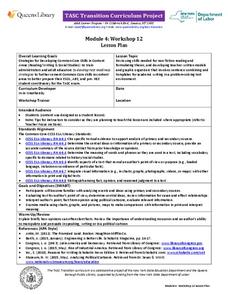
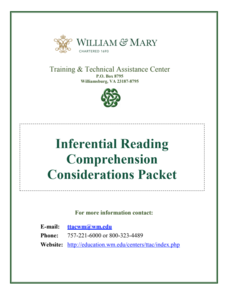













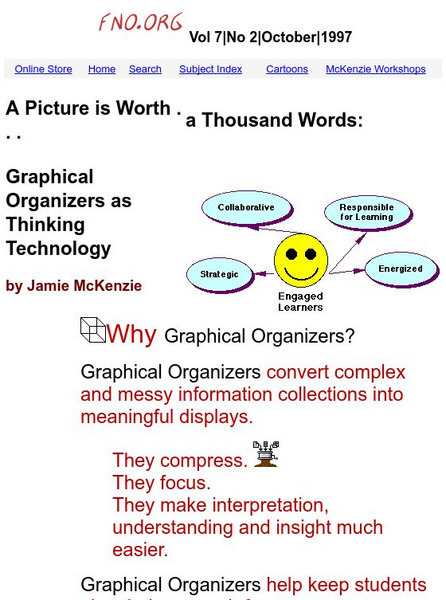
![Austin Independent School District: The Writing Teacher's Strategy Guide [Pdf] Professional Doc Austin Independent School District: The Writing Teacher's Strategy Guide [Pdf] Professional Doc](https://d15y2dacu3jp90.cloudfront.net/images/attachment_defaults/resource/large/FPO-knovation.png)
